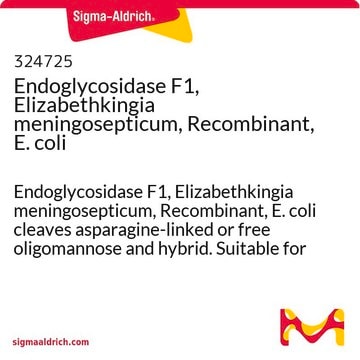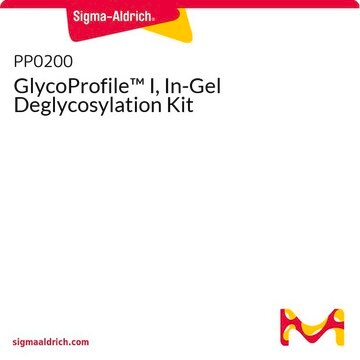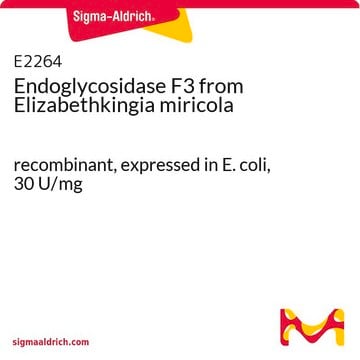E0639
Endoglycosidase F2 from Elizabethkingia miricola
recombinant, expressed in E. coli, 20 U/mg
Synonym(s):
Elizabethkingia miricola, Endo-β-N-acetylglucosaminidase F2, Endo F2, Endoglycosidase F2 from Chryseobacterium meningosepticum, Endoglycosidase F2 from Elizabethkingia meningoseptica, Endoglycosidase F2 from Flavobacterium meningosepticum
About This Item
Recommended Products
recombinant
expressed in E. coli
Quality Level
conjugate
(N-linked)
form
solution
specific activity
20 U/mg
mol wt
32 kDa
shipped in
wet ice
storage temp.
2-8°C
Looking for similar products? Visit Product Comparison Guide
Packaging
Unit Definition
Physical form
Storage Class Code
10 - Combustible liquids
WGK
nwg
Flash Point(F)
Not applicable
Flash Point(C)
Not applicable
Personal Protective Equipment
Certificates of Analysis (COA)
Search for Certificates of Analysis (COA) by entering the products Lot/Batch Number. Lot and Batch Numbers can be found on a product’s label following the words ‘Lot’ or ‘Batch’.
Already Own This Product?
Find documentation for the products that you have recently purchased in the Document Library.
Customers Also Viewed
Articles
Explore strategies for releasing N-linked glycans with PNGase F, PNGase A & native & sequential deglycosylation with endoglycosidases & exoglycosidases.
Our team of scientists has experience in all areas of research including Life Science, Material Science, Chemical Synthesis, Chromatography, Analytical and many others.
Contact Technical Service









